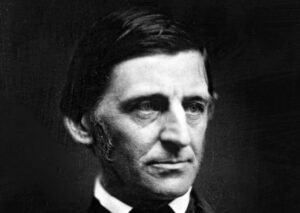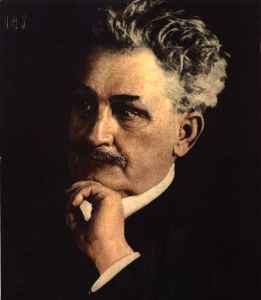Music is used in film to help transition from scene to scene; to spark and then carry emotional intensity; to round out character and plot.
I have used music too, in all my films, for those reasons…but music in my films is more than that…it is an integral part of the architecture of the film; it is a full-fledged member of the cast. In some respects, music becomes the film as the film becomes music.

In my new film “Ralph Waldo Emerson: Give All to Love” which will premiere at the Concord Free Public Library on September 30, I use the music of Leoš Janáček (1854-1928). He is a very favorite composer of mine. I love this man’s spiky but appealing music, owing much to the great Slavonic tradition of Dvořák and others but, with its irregular meter and slightly twisted take on folk tune simplicity, firmly and lyrically centered in the realm of early 20th century tonal Modernism.
I admire the depth of soul in the music of Janáček, which goes nicely with and, I think, compliments the probing, mystical, yet reality-grounded man we know as the father of American literature…Ralph Waldo Emerson.
Specifically, for the music of this film we use Janáček’s piano music and his most fertile period of piano composition between 1900 and 1912. I’m pleased that we are using the thoughtful and sensitive recorded performances of Leif Ove Andsnes, of excerpts from the fifteen piano pieces “On an Overgrown Path” (written between 1900 and 1911) and the poignant and mysterious piano cycle “In the Mists” (from 1912…his last major piano work).

We also use brief excerpts from Janáček’s 1905 work “Piano Sonata 1.X. 1905” commemorating the tragic death of a young man killed in a protest in Brno in support of academic freedom. This glorious work originally had three movements…but Janáček, continually dissatisfied with what he had composed, burned the third movement. He later threw the first two movements in the Vltava River, where he was sure they would float away into obscurity. What he had forgotten was that a friend had a copy of the manuscript (the first two movements), and she performed it publicly in 1924 for the first time.
These glorious performances by Mr. Andsnes can be heard on a Parlophone recording. Janáček‘s music permeates this film, and, as a series of leitmotifs, supports and underscores the narrative flow and imagery as the film unfolds.
There is a splendid orchestral version of “On an Overgrown Path,” and we use two sections of it from an ECM recording, featuring the conductor Igor Karsko and the Camerata Zürich, with orchestral arrangements by Daniel Rumler.
This music is placed in “Give All to Love” so that it sneaks into scenes to announce what is to follow after periods of unaccompanied narration, or is used to underscore a scene, balancing intensity of visual imagery while offering a quiet question about what’s behind what you see on the screen.
With all my films, the music is pretty much decided on before I write a word of the film; before any footage is shot. All this happens before my wife Terri Templeton (my executive producer and artistic partner) and I really begin much of anything. We are both trained musicians. We hear film music differently than most film makers: music is the house in which the film is born.
That has certainly been the case here.
Emerson and Janáček. An unexpected pairing, you say? Perhaps not. If you read Emerson closely you witness the journey of mind and heart that the great man took, standing astride our 19th century, until the final years when debility slowed his pace.
With Janáček the journey begins with seemingly simple motivic mentions, that lull you into believing in the fairy tale he is weaving, until he turns complex and unexpected as he continues down a darker musical path.
The journeys of both men are filled with exuberance; both journeys ending with the finality of the affirmation of life.
Perhaps that is why they belong tightly woven together within the spaces of 24 frames per second. The journey of each passes quickly…in the flicker of an eye…but in each case always with the same great and profound understanding of who we are.
View an excerpt from “Ralph Waldo Emerson: Give All to Love” on Vimeo at this link.



